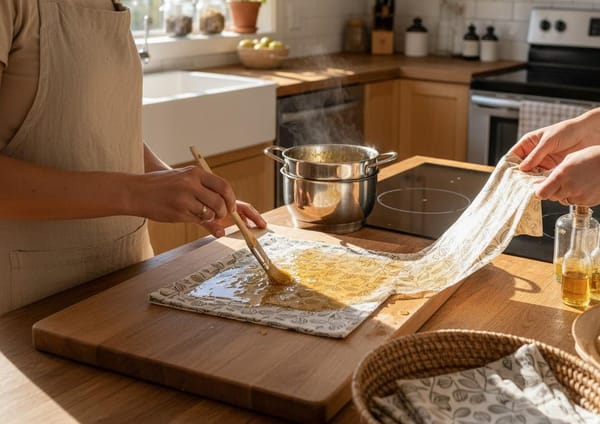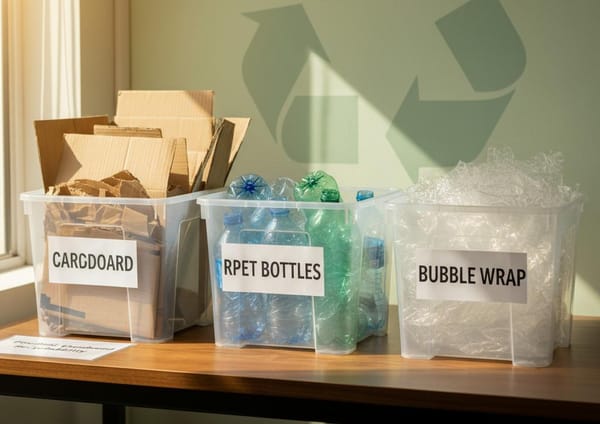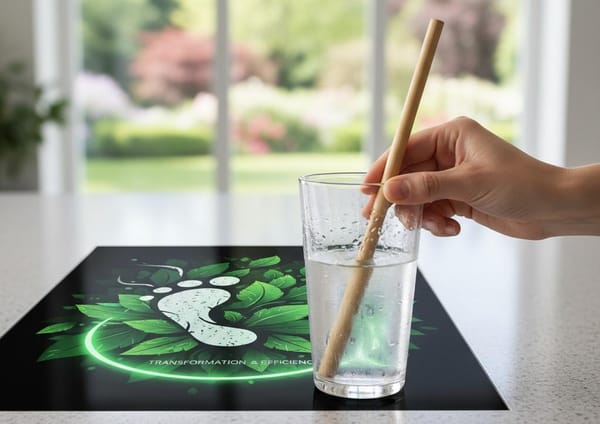Is cardboard recyclable? How to sort at home

Is cardboard recyclable?
The short answer is yes, but how you recycle it makes a big difference for the planet and for local recycling systems.
Cardboard is everywhere: shipping boxes, food containers, and product displays. Because it comes in many forms, from corrugated packing to waxed pizza boxes, correct sorting matters. When you flatten and dry cardboard and remove tape and food-soiled bits, recyclers can turn those fibers into new paper, which saves trees, water, and energy. However, when cardboard arrives wet or contaminated it often goes to landfill, so small actions at home have large consequences.
This guide explains why understanding cardboard recycling matters for environmental conservation and for more efficient collection systems. You will learn practical tips that work in 2026, including which types of cardboard recyclers accept, how to prepare cardboard for curbside pickup, and when to choose reuse instead. Therefore, by the end you will feel confident making smarter recycling choices that reduce waste, lower emissions, and support a circular economy.
Is Cardboard Recyclable? Exploring the Basics
Is cardboard recyclable? Yes — and knowing why matters for real-world recycling outcomes. Cardboard is made from plant fibers that can be remade into new paper products, but the final result depends on how clean and dry the material arrives at the recycling center.
What makes cardboard recyclable
- Natural fibers: Cardboard contains cellulose fibers that recyclers can break down and reform. This is why the cardboard recycling process focuses on pulping and screening.
- Minimal coatings: Plain, uncoated cardboard recycles easily. Coated or plastic-laminated boards are harder to process.
- Low contamination: Clean, dry cardboard preserves fiber quality. Therefore you should remove food, oil, and excess tape before recycling.
Types of cardboard and examples
- Corrugated cardboard: Shipping boxes and large cartons — widely accepted in curbside programs.
- Paperboard (also called cartonboard): Cereal boxes and small product boxes — usually recyclable.
- Waxed or grease-resistant cardboard: Pizza boxes or takeout containers may be partly recyclable; greasy tops often go to compost or trash.
- Composite or laminated cardboard: Cards with plastic windows or heavy coatings are often not recyclable.
Common contaminants that affect recyclability
- Food and grease: Oil weakens fibers and ruins pulping.
- Moisture: Wet cardboard can mold and lose value, often going to landfill.
- Heavy tape, labels, and adhesives: These create processing problems and lower paper quality.
- Mixed materials: Plastic liners or foil layers usually make cardboard nonrecyclable.
How the cardboard recycling process works (brief)
- Collection and sorting, baling, then pulping to separate fibers.
- Screening and cleaning, then drying and remanufacture into new paper.
For curbside sorting tips, see this deep dive on cleaner recycling: cleaner recycling. For context on replacing single-use materials and circular choices, read renewable materials and plastics. For links between packaging choices and sustainability, see RPET bottle packaging sustainability. Also consult government guidance at EPA recycling guidance and materials guidance from WRAP at WRAP materials guidance for local rules and updates.
Common Challenges in Recycling Cardboard
Recycling cardboard sounds simple, but several real world obstacles reduce recovery and value. Understanding these cardboard recycling challenges helps you sort better at home and reduces costly rejects at the recycling facility.
Key problems and how they hurt the system
- Contamination from food and grease: Greasy pizza boxes and food-soiled cartons can ruin whole bales. Contaminated cardboard impact includes weaker fibers and lower-quality pulp, which leads to more material being diverted to landfill or incineration. See industry data showing contamination rates and costs at this link.
- Moisture damage: Wet cardboard molds and loses strength. Therefore wet bales fetch lower prices and may be rejected at the mill.
- Mixed materials and coatings: Plastic windows, foil liners, or heavy wax coatings often make a box nonrecyclable. These materials increase sorting complexity and processing time.
- Heavy tape and adhesives: Thick tape and glued labels clog machinery and reduce throughput.
Facts and figures worth knowing
- Corrugated cardboard has historically shown high recovery rates, yet reported cardboard recycling rates vary. For example, the American Forest & Paper Association reported a 93.6% OCC recycling rate for 2022, while later methodological changes placed 2023 estimates closer to 71–76%; read the AF&PA update at this link and analysis at this link.
- Contamination can be widespread: some reports estimate 15–25% of postconsumer OCC bales contain problematic contaminants, which raises sorting costs and lowers mill yields (details at this link).
Practical takeaway: keep cardboard dry, empty, and free of food, oil, and plastic. These small steps reduce overall system costs and improve cardboard recovery for new products.
| Type of cardboard | Recyclability | Typical uses | Common recycling challenges |
|---|---|---|---|
| Corrugated cardboard | Widely recyclable when clean and dry; highest value in recycling streams | Shipping boxes, e-commerce packaging, moving boxes | Contamination with food or moisture; heavy tape or mixed materials |
| Paperboard (cartonboard) | Generally recyclable through curbside programs | Cereal boxes, shoe boxes, cosmetics packaging | Thin fibers degrade after multiple cycles; glued liners or plastic windows |
| Wax-coated or grease-resistant cardboard | Often not recyclable in standard paper streams; sometimes compostable or requires special processing | Pizza boxes, takeaway containers, beverage carriers | Grease soaks fibers; wax prevents pulping; may contaminate bales |
| Composite or laminated cardboard | Usually non-recyclable in paper mills | Boxes with plastic windows, foil-lined cartons, coated gift boxes | Mixed materials complicate pulping and require manual separation |
| Cardstock and printed boxes | Recyclable if inks and coatings are minimal | Product boxes, greeting cards, small packaging | Heavy inks, varnishes, or metallic finishes can reduce recyclability |
Conclusion
Is cardboard recyclable? Yes — but the outcome depends on how we handle it before collection.
Recycling cardboard saves trees, reduces water use, and cuts energy and emissions. However contaminated cardboard, wet bales, and mixed-material boxes lower recovery rates and can send material to landfill. Therefore small steps you take at home matter.
Keep cardboard dry, flattened, and free of food, grease, and heavy tape. Remove plastic windows and liners where possible. Compost greasy pizza tops if your local organics program accepts them; otherwise tear off soiled sections before recycling.
Because cardboard fibers can be remade into new paper, responsible recycling supports a circular economy and reduces demand for virgin pulp. Also reuse sturdy boxes for storage or shipping to extend their life.
In short, knowing whether is cardboard recyclable helps you make better choices. Act today: sort smarter, recycle cleaner, and encourage neighbors to do the same. Together, these actions protect resources and keep cardboard in the recycling loop.



